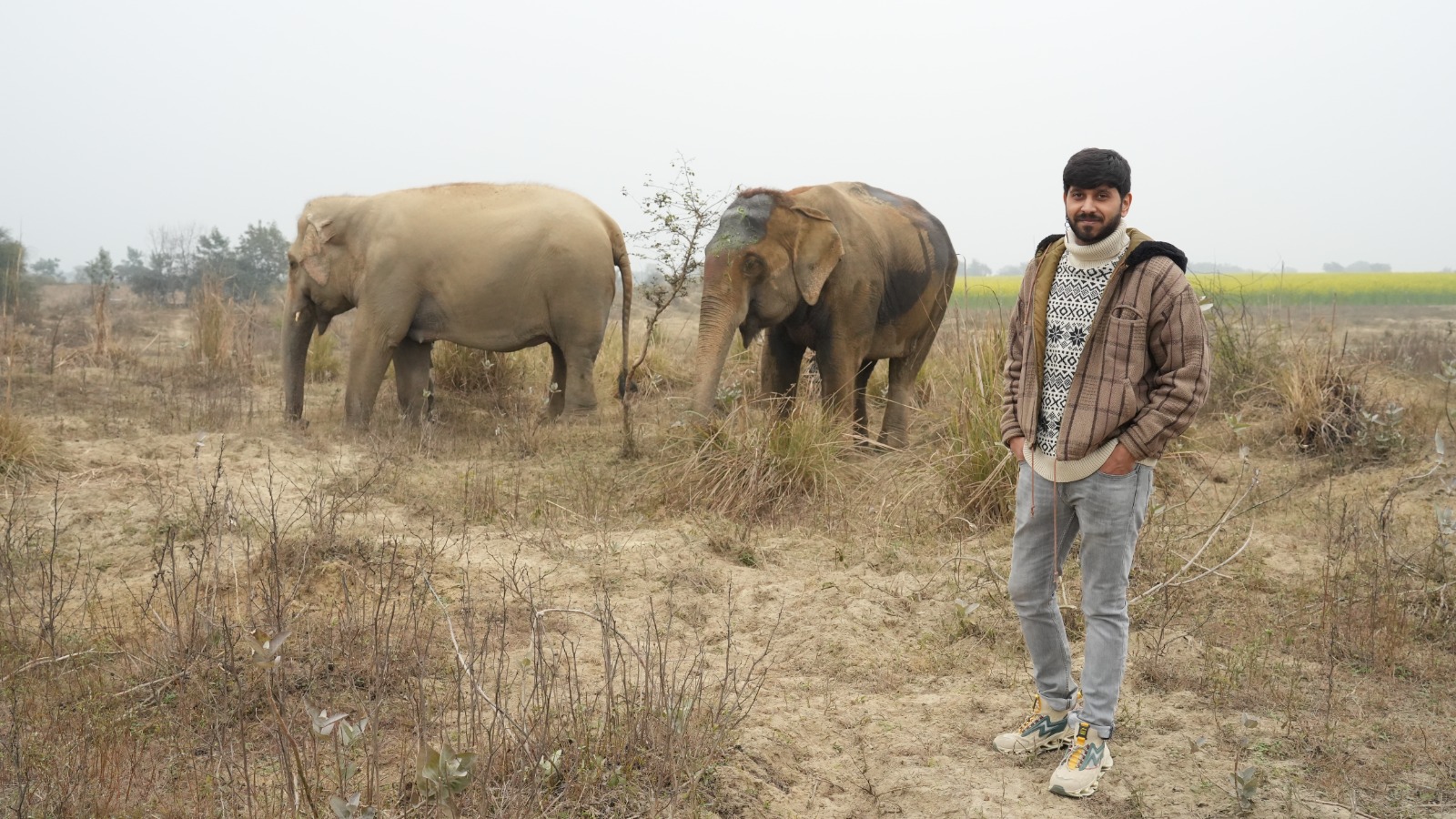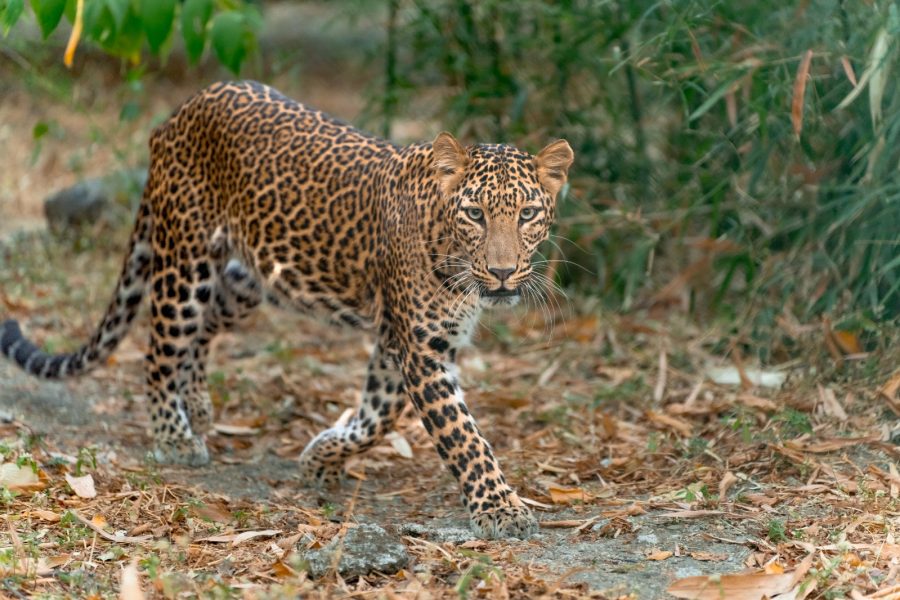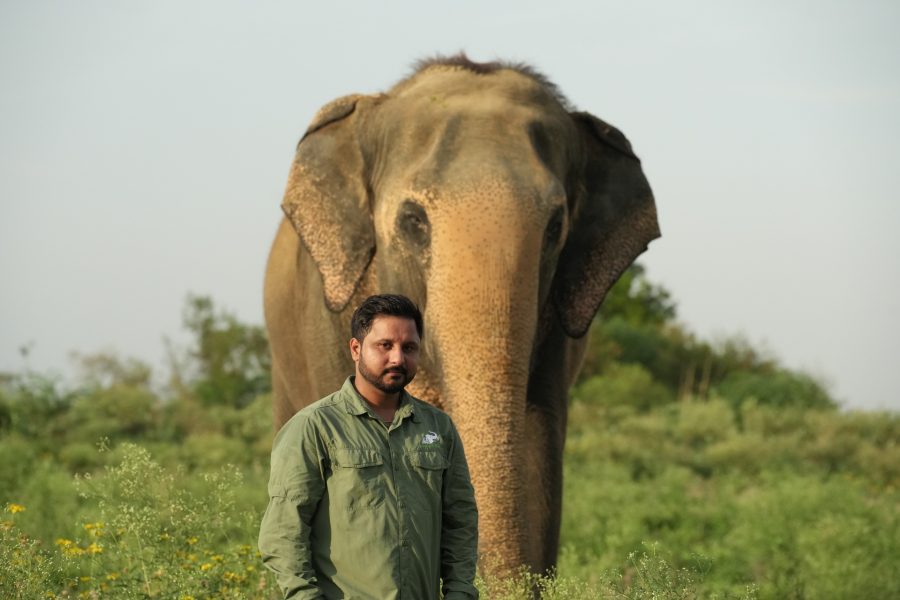Wildlife SOS’ Press and Communications Officer Neellohit Banerjee discovered his passion for wildlife quite unexpectedly: his journey into wildlife conservation began during the COVID-19 lockdown.
At the time, Neel was working as a lifestyle writer at Little Black Book (LBB). During the lockdown, he began to binge-watch documentaries about nature and wildlife, understanding the battles they were fighting to withstand damaging changes. Motivated to safeguard the planet’s crucial cohabitants, he quit his job at LBB and travelled to a remote town called Devalsari in the Garhwal Himalayas. There, he immersed himself in learning about native biodiversity and eco-tourism, an experience that laid the foundation for his new-found path.
The two-month-long trip became a turning point in Neel’s life. He resumed work with an urban-wildlife conservation organisation involved in researching the life cycle of non-biodegradable waste. As an activist and wildlife conservationist, Neel was soon driven to join Wildlife SOS’s communications team as a valuable contributor, and today, has become an indispensable part of it.
Interacting with Neel, who is our Staff of the Month, has revealed this and much more that defines his admirable vision to work towards nature, animals, and their welfare.
So, Neel, did you ever imagine while growing up that you would one day be working in the field of wildlife conservation?
No, never. In fact, my transformation started in 2020. Until then, I was indoctrinated like anyone else in our society. We get interested in popular fields like journalism, marketing, MBA, or advertising. We choose these famous career options, but we never think of becoming a conservationist or working in wildlife or nature.
During the lockdown, all I did was watch nature and wildlife documentaries. That is when I realised the gravity of the environmental situation, I knew something had to be done. So, I decided to change my career path. I wanted to work with organisations directly involved in conservation— whether it’s wildlife, nature, environment, or biodiversity. But after all is said and done, I feel like this field chose me. It was drawing me towards it. It sounds a bit philosophical, but that’s genuinely how I feel.
What was your first interaction with wildlife?
So, my understanding of wildlife has evolved over time. Traditionally, when asked about their first wildlife encounter, people might mention visiting a national park or sanctuary as adults and seeing a tiger or elephant. However, wildlife isn’t confined to such experiences. The word ‘wildlife’ is a portmanteau of “wild” and “life”, meaning any wild form of life. This includes not just animals, but also fungi, bacteria, and plants. Even the first bird I saw outside my residence, while it wasn’t living in a jungle, was still a wild form of life in a modified habitat. Keeping this perspective in mind, my first interaction with wildlife goes back to my school days when I was in the 3rd or 4th grade. I remember climbing a tree on my school’s campus for the first time. That, I would say, was my first ever interaction with the wild.
At Wildlife SOS, the story of which amongst the rescued animals struck you the most?
There are so many rescued animals at Wildlife SOS, each with their own tragic stories, that it’s hard to choose any one among them. Some stories have really stuck with me, so much so that they have shaped my views about the role of human beings as well.
One story I often share during my outreach initiatives for Wildlife SOS is about Ganesh. Ganesh is one of two male leopards, the other being Vitthal, living together at Manikdoh Leopard Rescue Facility. Vitthal came in first, with his paw having been cut off by poachers. Ganesh arrived later, and his story is particularly heartbreaking. When Ganesh was just a three-month-old cub, villagers beat him up so badly that he became blind. He was just existing as a leopard cub, posing no threat, yet he was subjected to such brutality. When I got to know about his story, I was dumbfounded by the atrocities humans can commit against innocent animals, making it hard for me to feel fond of our own species sometimes.
Another story that moved me deeply was shared by Ms. Aaliya Mir, Education Officer and Programme Head in Jammu and Kashmir with Wildlife SOS. She told me about the start of our Jammu and Kashmir centre, which was triggered by a horrifying incident where a bear was burned alive by a mob. Hearing her describe the event in vivid detail played as a horror movie in my head, and remains to be one of the most chilling and scarring stories I’ve heard.
Any experience at Wildlife SOS that is close to your heart?
There are so many cherished memories, but probably the most special ones are from my first visits to the organisation’s various centres. For example, when I visited the Bannerghatta Bear Rescue Centre or the Agra-Mathura facilities for the first time, each was incredibly impactful. Seeing the animals we are working for, in person, reinforced my belief in the importance of our work. It really put things into perspective, and till today, reminds me why my help is needed.
One particularly memorable experience was during my visit to Agra. It was my first-ever boat ride from the Agra Bear Rescue Facility (ABRF) to the ABRF extension. This happened in 2020, and although it wasn’t my first boat ride in life, it was my first during a Wildlife SOS tour. The ride took place during sunset, which made it especially beautiful.
Who inspires you to keep going and continue the work that you do?
I have quite a few people whom I hold as role models, at least in wildlife conservation. Dr. Jane Goodall is amazing because of how much she’s contributed through her primate research. Her work with chimpanzees has given us so much insight into their behaviour and intelligence. She’s also done a ton to help conserve various primate species. Then there’s primatologist Dian Fossey. She was incredible — she gave up her life protecting gorillas in the Democratic Republic of Congo. She was murdered because she stood up against poaching and illegal mining.
Another person whom I have been in awe of is India’s Amrita Devi Bishnoi. She was a pioneer of the Chipko movement, and her story is so powerful. Despite the fact that women at that time were mostly confined to household roles, she managed to gather a group of rural women to protect trees and forests.
And of course, there’s Sir David Attenborough. He’s the epitome of perseverance and longevity. Even at 98, he’s still fighting for the planet, speaking out about environmental issues, and contributing to such incredible nature documentaries.
What do you want to say to our young readers who are right now trying to figure out how to make a career in wildlife?
Both academic institutions and organisations working in nature and wildlife conservation are still somewhat unpopular. My recommendation isn’t just for younger people, but also for their parents and teachers. Expose kids to nature as much as possible. Let them experience nature in its many forms — aggressive or delicate. The more kids go out and observe, so that they can connect more with nature. Even a simple walk while listening to birds and trying to identify different species can be a big step. Many conservationists suggest that ornithology, or the study of birds, is a great entry point into wildlife because birds are what we see most commonly around us.
Another aspect to conserving wildlife is considering that you don’t have to be a professional conservationist to contribute to the environment. Anyone can be a conservationist. It’s not just a job profile or profession; it’s a lifestyle. Whether you’re a footballer, a doctor, an engineer, or even a performing clown, you can live mindfully and promote eco-friendly, sustainable living. Look at our organisation — we have departments for marketing, fundraising, advertising, communications, PR, and writing, and all of us in our own way are contributing to wildlife conservation. Even if you’re going into a different field, you can still preach and practise eco-friendly living and sustainability. So, my message is: you can contribute to conservation, no matter your career path. It’s about adopting a way of life that respects and preserves the environment.





